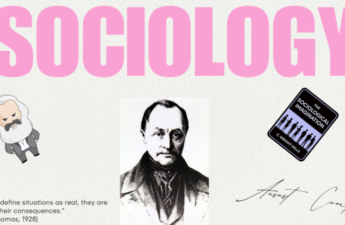As the weather outside is kindly reminding us, the time of enjoying the great outdoors is, at least for those of us who don’t like the rain and cold, over. So we have to find a new way of spending time in the safety of our warm and rainproof houses or flats. And one of the best pastimes to do it is watching movies. You could argue with me that there are hundreds or even thousands of better ways to spend your free time, but for me and the purpose of this article, watching movies is one of the best and most common pastimes. And this pastime is possible by one of the most widespread inventions of the 20th century – television. At this point of time, regarding movies, the world is your oyster and you can have any movie ready at the push of a button. And this leads to some people asking and debating, if Hollywood, the birthplace of the movie industry, the Home of the Stars, Tinseltown, was killed by the TV?
Firstly I would say killed is a really strong word for what happened to Hollywood. I personally would say that Hollywood was not killed, but maybe just heavily maimed or damaged beyond recognition. You may counter argue that I and the other naysayers are completely wrong for saying this and should be checked by some psychiatrist because Hollywood is still going strong and there isn’t any other place in the whole world so synonymous with the movie industry than Hollywood. But allow me to demonstrate my point and then make your decision yourselves.
To understand the decline we must go back in time to the 1950s, right after the Golden Age of Hollywood, where the classics such as The Wizard of Oz, Casablanca, King Kong or Gone With the Wind were made (Blakemore, 2018). The 1950s in Hollywood were a time of change. Movie makers started focusing their work on younger audiences and we could see the rise of the rise of “edgier” movie stars like James Dean, Marlon Brando and Marilyn Monroe. With them also came darker plotlines. But the biggest change then came with the television set (Hale 2014). The basic convenience of not leaving the comfort of your home to enjoy a movie outhweigted the glamour of cinemas and caused a major decline in cinema attendance.
So by the end of the 50s and during the 60s Hollywood was on decline. Cinema attendance was low, so Hollywood execs started to make movies for television. Although by the 1970s Hollywood caught a second breath. During the 70s a new type of movie – summer blockbuster was born. And many of these blockbusters gained a cult following, such as Jaws by Spielberg or Star Wars by Lucas. This carried on the 80s, which continued the Age of Blockbusters. To keep people in the cinemas and to make the most money from them, movies became highly marketable. And they did make money from them. Indiana Jones, Star Wars, Rocky, Highlander, were highly profitable series, but even then came another nail to the metaphorical coffin – VHS. Now even these blockbusters can be rented out in the form of cassette and enjoyed in your living room.
The spark of the blockbusters of the 80s died and decline in the cinema attendance and ticket sales returned in the beginning of the 1990s. Movie makers in Hollywood had to continue in the 80s trend to make movies highly marketable and often at loss of creativity. To be fair, there were some exceptions and 90s didn’t have just some repetitive movies for people to spend money on. We got Titanic, Jurassic Park, Matrix and even the first Lord of the Rings. Though we also got them on DVDs, which again simplified the process of renting a movie and enjoying it at home (HISTORY.COM, 2018).
But then the new millennium came and saw the rise of the video on-demand services which later evolved into the streaming services we know today, such as Netflix, HBO Max, Hulu and Disney+ and the rising quality of TV series. Such gems as Mad Men, Game of Thrones, House of Cards or True Detective brought people back from theatres to their flat screens. But the major factor was this sheer convenience of streaming services, because you can now watch from the train, from running on the treadmill, even from the toilet, if we are honest. Another huge part of TV rise and decline of Hollywood is the conversation on social media surrounding the series. TV is not just an object, it’s now an actionable thing. You don’t just sit there anymore, staring at it. You watch, react, tweet, repeat. In that order (Cantor, 2014).
All these factors combined with the coronavirus pandemic that closed the world contributed to the downfall of Hollywood and I think this one is a final one. Hollywood of old, the previously mentioned Tinseltown, is gone and was killed by the television. But death doesn’t strictly mean your journey is ending. You can be reborn and I believe that Hollywood is on the path of rebirth. Maybe for the better, maybe for worse, we will see.
Sources
Blakemore, E., 2018. How TV Killed Hollywood’s Golden Age. [online] HISTORY. Available at: <https://www.history.com/how-tv-killed-hollywoods-golden-age>.
Cantor, P., 2014. Hollywood Has a Major Problem. [online] Medium. Available at: <https://paulcantor.medium.com/hollywood-has-a-major-problem-b3491b6919e9>
Hale, B., 2014. The History of Hollywood: The Film Industry Exposed. [online] History Cooperative. Available at: <https://historycooperative.org/the-history-of-the-hollywood-movie-industry/>.
HISTORY. 2018. Hollywood. [online] Available at: <https://www.history.com/topics/roaring-twenties/hollywood>.



